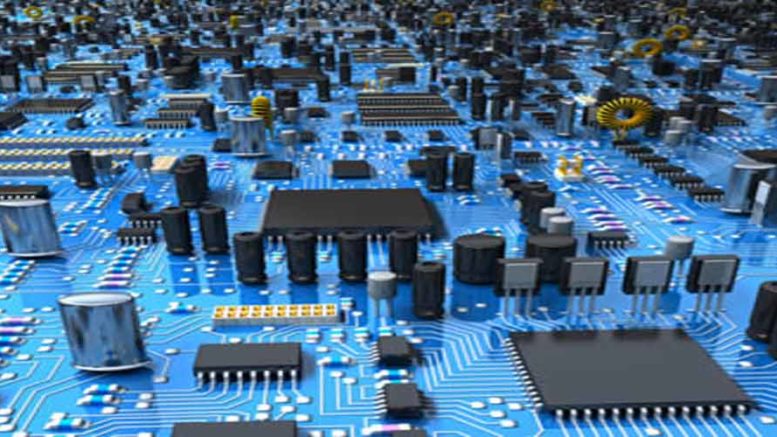Over time the devices and computers we use have gotten smaller in size. This can be directly attributed to the technological progress and our increasing knowledge on various ways to make smaller devices. Processors inside smartphones today have the capability to power an entire spacecraft and the most powerful computers in the world can help predict the weather with a great deal of certainty. The most important innovation that has helped us reach this stage is the invention or rather the discovery, that one can construct entire circuits on a single monolith of a semiconductor. This led to the birth of modern-day integrated circuits and today it is used in every single electronic device out there.
In the beginning, the first semiconductor chips held only two transistors each. As technology and understanding advanced, more transistors were added and as a consequence, more individual functions or systems were carefully integrated over time. The initial ICs held only a few devices, only about as many as ten diodes, transistors, resistors and capacitors. This made it possible to fabricate one or more logic gates on a single device. This was the integration of a small number of gates and transistors were called small-scale integration (SSI). As improvements in techniques were made devices with hundreds of logic gates, known as medium-scale integration (MSI) came to fruition. Sufficient time and knowledge led to the development of large-scale integration (LSI), i.e. systems with at least a thousand logic gates. Currently, technology has moved beyond this mark and the microprocessors of today have hundreds of millions of gates and billions of individual transistors.
This point demarcated Very Large Scale Integration (VLSI) and there was a point in time when there was an effort to name and calibrate various levels of LSI above VLSI, but the huge number of gates and transistors on even the simplest and most common devices has rendered such distinctions useless. Terms suggesting greater than VLSI levels of integration are no longer in widespread use.
In 2008, billion-transistor processors became commercially available. This became far more common as semiconductor fabrication has advanced from the 65nm processes. Currently, designs utilize a heavy amount of automation and automated logic gate synthesis to lay out transistors. This enables higher levels of complexity in the logic functions as a result. However, certain high-performance logic blocks like the SRAM (static random-access memory) cell, are still designed by hand to ensure the highest levels of efficiency.
A superfast developing country like India is the future for VLSI, with a huge number of working professionals available and eager to learn the design processes. There are a wide number of VLSI coaching centres in Bangalore, Delhi and Mumbai, operated by professional and experts from the semiconductor industry. They seek to bring in more multinational companies to the country, thereby increasing the influx of foreign investment. One of the most developed cities in India is Bangalore and there is an abundance of companies and institutes that operate in the city. VLSI Bangalore institutes have a variety of courses on offer and all of which are very useful and can help one become an expert in the field.

Be the first to comment on "The Progress of Integrated Circuits"